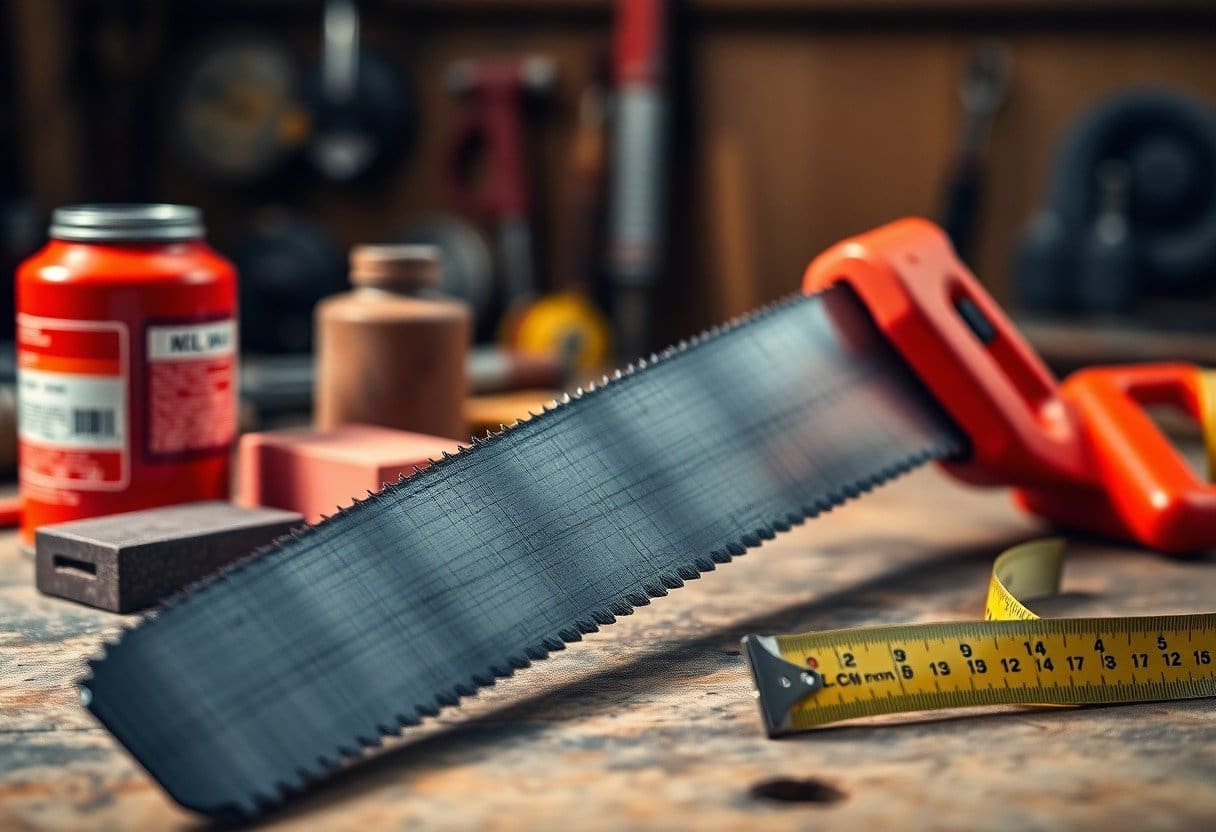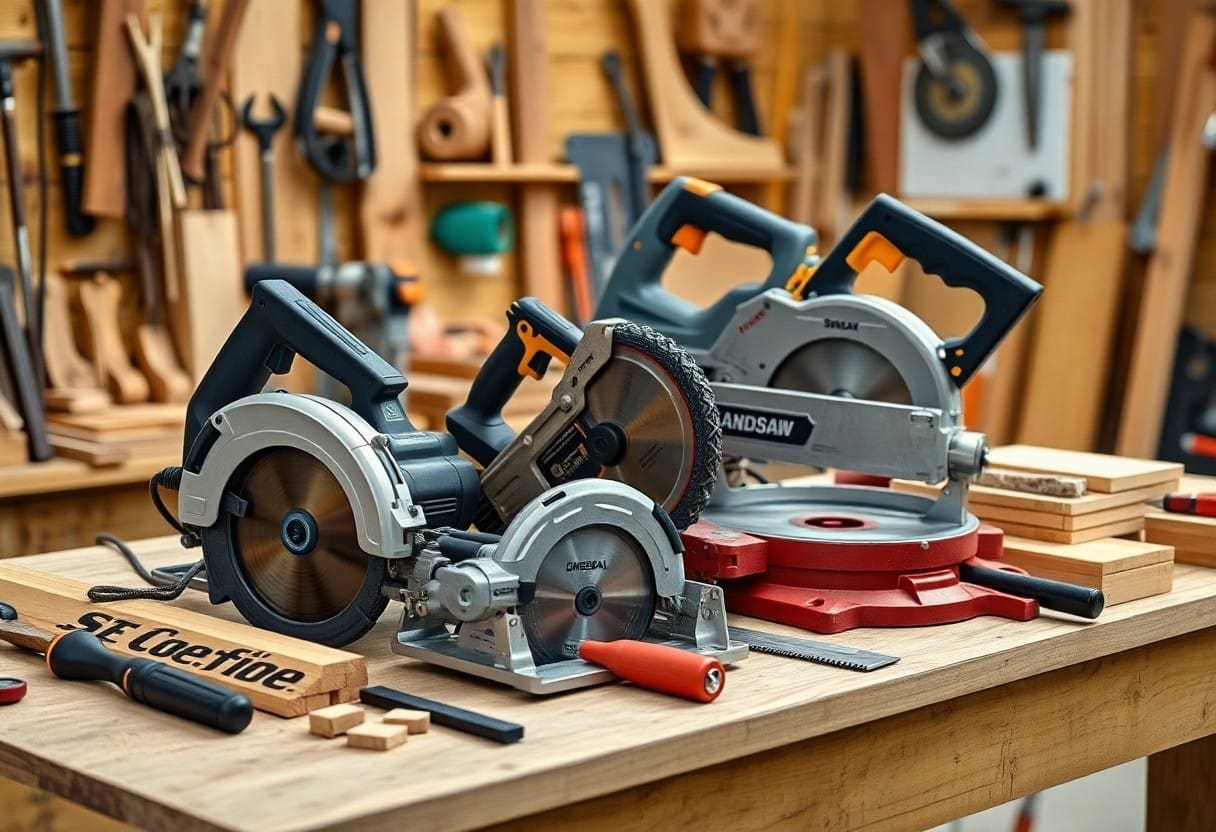With the abundance of tools available to woodworkers, there are some lesser-known gems that can truly elevate the quality of your craftmanship. Beyond the basics like saws and chisels, I’m here to shed light on the tools that might not be as popular but are definitely worth having in your workshop. From Japanese pull saws to card scrapers, these tools may just become your new favorite companions in the world of woodworking.
The Unassuming Heroes of Woodworking
A woodworking shop is often filled with an array of tools, each serving a specific purpose in creating finely crafted pieces. While traditional tools like chisels, saws, and planes take center stage, there are some lesser-known tools that deserve recognition for their role as the unassuming heroes of woodworking.
Hidden Gems in the Toolbox
Hidden among the more prominent tools are items like a marking gauge, a burnisher, or a card scraper. These tools may not be as flashy as a power sander or table saw, but they play crucial roles in achieving precision and finesse in woodworking projects.
Why These Tools Are Often Overlooked
Toolbox
Often these tools are overlooked because they require a bit more finesse and skill to use effectively. For instance, a card scraper may seem simple, but mastering the technique of scraping requires practice and patience. Many woodworkers may opt for quicker, power tool alternatives, but those who take the time to learn these tools’ intricacies are rewarded with exceptional results.
Measuring and Marking Mastery
The Importance of Precision
Importance is key when it comes to woodworking. The difference between a well-crafted piece and a mediocre one often comes down to precision in measuring and marking. Without accurate measurements and markings, your project may not come together as intended, leading to frustration and wasted materials.
Introducing the Bevel Gauge
Introducing a bevel gauge into your toolkit can elevate your woodworking game to the next level. This simple yet powerful tool allows you to easily measure and transfer angles, ensuring that your cuts are precise and your joints fit together seamlessly.
This versatile tool can be used for a variety of tasks, from transferring angles from one piece of wood to another, to checking the accuracy of your table saw blade or miter gauge. With a bevel gauge in hand, you’ll have the confidence to tackle more complex projects with ease.
How to Use a Marking Knife Effectively
For woodworkers looking to take their precision to the next level, mastering the use of a marking knife is vital. Unlike pencils or pens, marking knives leave behind a crisp, precise line that serves as a perfect guide for your cuts. By scoring the wood fibers instead of just marking the surface, a marking knife ensures that your cuts are accurate and clean every time.
Gauge the depth of your marking knife to match the thickness of your material for optimal results. The sharp blade of the knife will create a visible indentation that you can easily follow with your saw or chisel, resulting in tight-fitting joints and professional-looking finishes.
Cutting and Shaping Secrets
Despite the prevalence of power tools in modern woodworking shops, there are some traditional hand tools that every woodworker should have in their arsenal. These tools not only provide a more intimate connection to the wood but also allow for greater precision and control in shaping and cutting. In this chapter, we will explore some lesser-known tools that can elevate your woodworking game to the next level.
The Forgotten Art of Hand Sawing
To truly connect with the wood and exercise complete control over your cuts, mastering the art of hand sawing is imperative. While power saws may be faster, they often lack the finesse and precision that a well-tuned hand saw can provide. By learning how to properly set up and use a hand saw, you can achieve smoother cuts with cleaner edges, resulting in a higher quality of work.
Mastering the Coping Saw
Sawing intricate curves and shapes in wood can be a challenging task, especially with power tools. This is where the coping saw shines. With its thin blade and ability to make tight turns, the coping saw is perfect for intricate and detailed work. By mastering the technique of using a coping saw, you can add a new dimension to your woodworking projects, allowing for more creativity and personalized touches.
A coping saw is a versatile tool that can be used for everything from cutting dovetails to trimming intricate patterns. Its thin blade allows for greater maneuverability, making it ideal for delicate work that requires precision and attention to detail.
The Versatility of a Spokeshave
Forgotten by some modern woodworkers, the spokeshave is a versatile tool that excels in shaping and smoothing wood. With its adjustable blade and comfortable handles, the spokeshave can tackle a variety of tasks, from shaping chair legs to smoothing out curved surfaces. This tool is imperative for achieving smooth, flowing contours and adding a touch of handcrafted elegance to your projects.
For instance, a spokeshave can be used to round over sharp edges, create chamfers, or even hollow out concave shapes. Its simplicity and ease of use make it a valuable addition to any woodworker’s toolkit, providing a level of control and precision that is hard to match with power tools alone.
Smoothing and Finishing Essentials
The Humble Sandpaper Block
The humble sandpaper block may not be the most glamorous tool in the woodworking shed, but it is an important item for achieving smooth and polished surfaces on your projects. Whether you are looking to remove rough edges, level out uneven surfaces, or prepare wood for staining and finishing, a good quality sandpaper block is a must-have in your arsenal.
With a variety of grits available, from coarse for heavy-duty sanding to fine for delicate finishing work, the sandpaper block allows you to achieve the level of smoothness and precision that every woodworking project deserves.
Why You Need a Steel Wool Pad
To add that final touch of perfection to your woodworking projects, a steel wool pad is a game-changer. This versatile tool is ideal for smoothing out wood surfaces, removing blemishes and imperfections, and preparing the wood for a flawless finish. Whether you are working on a furniture piece or a small craft project, a steel wool pad is an important addition to your toolkit.
Another bonus of using a steel wool pad is its compatibility with various finishes, including stains, varnishes, and paints. It helps to achieve a professional-looking result by evenly applying the finish and giving your project that extra finesse.
The Magic of a Hand Plane
With its roots tracing back centuries, the hand plane is a timeless tool that every woodworker should have in their workshop. This versatile tool is perfect for smoothing rough surfaces, trimming edges, and shaping wood with precision. Whether you are a seasoned woodworker or just starting out, a hand plane can elevate the quality of your work and bring a touch of craftsmanship to your projects.
This important tool allows you to adjust the thickness of wood, create chamfers and profiles, and achieve a glassy smooth finish that is hard to replicate with power tools. Embrace the magic of a hand plane and experience the satisfaction of handcrafted woodworking at its finest.
Clamping and Holding Hidden Gems
To truly excel in woodworking, one must understand and appreciate the importance of clamping and holding tools. These often-overlooked gems are crucial for ensuring precise and accurate results in any woodworking project.
The Mighty Bar Clamp
Holding pieces of wood securely in place can be a challenging task, especially when working on larger projects. This is where the mighty bar clamp comes to the rescue. With its long, adjustable arm and strong gripping power, the bar clamp is a versatile tool that every woodworker should have in their arsenal.
The Unassuming C-Clamp
Unassuming in appearance but powerful in function, the C-clamp is another imperative tool for any woodworker. Its simple yet effective design allows for easy one-handed operation, making it ideal for holding pieces together while you work on them.
Plus, the C-clamp’s ability to be easily adjusted and secured in place makes it a valuable asset for a wide range of woodworking tasks, from gluing and clamping joints to securing workpieces to a bench.
The Art of Using Cauls
With the art of using cauls, woodworkers can achieve flat, even glue-ups without the need for excessive sanding or planing. These simple wooden sticks or boards are placed across the width of a panel or board to distribute pressure evenly during glue-ups, preventing bowing or warping.
Understanding how to properly use cauls can elevate the quality of your woodworking projects, ensuring that your pieces come out perfectly flat and smooth every time.
Assembly and Joinery Aids
The Simple yet Effective Biscuits and Buttons
With the help of biscuits and buttons, woodworkers can easily strengthen joints and improve alignment during assembly. Biscuits are small, oval-shaped pieces of compressed wood that are inserted into slots created by a biscuit joiner. When glue is applied, biscuits swell and create a tight bond between two pieces of wood. Buttons, on the other hand, are small wooden pieces that can be used to reinforce miter joints, adding both strength and visual appeal to projects.
The Power of Dominos
On the quest for stronger and more precise joinery, woodworkers turn to the power of domino joinery. Domino joinery involves creating mortises in the pieces to be joined and then using floating tenons (dominos) to secure the joint. The precision and speed of the domino joiner make it a valuable tool for creating sturdy and accurate joints that can withstand the test of time.
Effective domino joinery can significantly reduce the time spent on traditional joinery methods while providing increased strength and precision in woodworking projects. The versatility of the domino joiner allows woodworkers to tackle a wide range of joinery tasks with ease, making it a valuable addition to any woodworking shop.
The Forgotten Art of Hand-Cut Dovetails
Forgotten by some but revered by traditional woodworkers, hand-cut dovetails represent a true test of a woodworker’s skill and craftsmanship. While the process of cutting dovetails by hand is time-consuming and requires practice, the result is worth the effort—a strong, visually striking joint that adds a touch of elegance to furniture and other woodworking projects.
Joinery enthusiasts often cherish the art of hand-cut dovetails for the level of precision and attention to detail it demands. While the availability of mechanical aids may tempt some woodworkers to opt for quicker methods, mastering the technique of hand-cut dovetails can elevate the quality and craftsmanship of your woodworking projects.
Joinery aids like biscuits, buttons, dominos, and hand-cut dovetails offer woodworkers a range of options for creating strong, precise, and visually appealing joints in their projects. By incorporating these lesser-known tools into their woodworking arsenal, craftsmen and hobbyists can enhance the quality and durability of their creations while mastering traditional joinery techniques that stand the test of time.
Summing up
Drawing together the various lesser-known tools that every woodworker should have, it becomes evident that having a selection of specialized tools can elevate the craftsmanship and efficiency of any woodworking project. From a marking knife and flush-cut saw to a card scraper and spokeshave, these tools may not be as well-known as the hammer or chisel, but they have their own unique functions that can significantly enhance the quality of your work.
To summarize, adding these lesser-known tools to your woodworking arsenal can provide you with the precision and finesse needed to take your projects to the next level. Embracing the lesser-known tools alongside the more traditional ones can open up new creative possibilities and help you refine your skills as a woodworker. So, next time you’re in the workshop, consider adding some of these tools to your collection and see the difference they can make in your woodworking journey.




